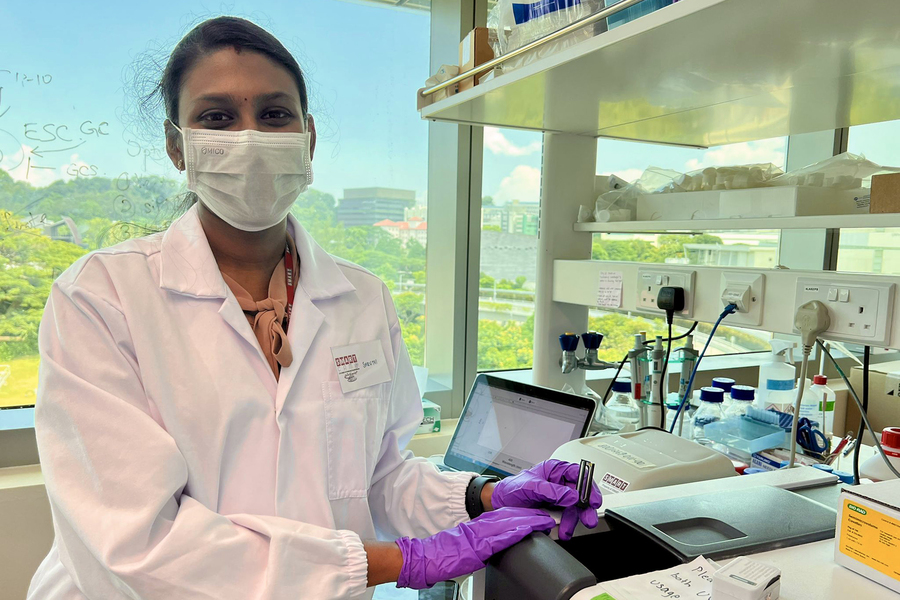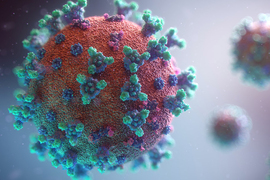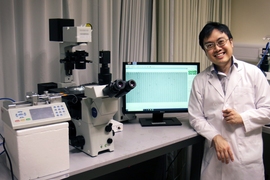Researchers from the Critical Analytics For Manufacturing Personalized-Medicine (CAMP) interdisciplinary research group at the Singapore-MIT Alliance for Research and Technology (SMART), MIT’s research enterprise in Singapore, have developed a new method of detecting adventitious microbial contamination in mesenchymal stromal cell (MSC) cultures, ensuring the rapid and accurate testing of cell therapy products intended for use in patients. Utilizing machine learning to predict if a culture is clean or contaminated in near-real time, this breakthrough method can be used during the cell manufacturing process, compared to less efficient end-point testing.
Cell therapy has, in recent years, become a vital treatment option for a variety of diseases, injuries, and illnesses. By transferring healthy human cells into a patient’s body to heal or replace damaged cells, cell therapy has shown increasing promise in effectively treating cancers, autoimmune diseases, spinal cord injuries, and neurological conditions, among others. As cell therapies advance and hold the potential to save more lives, researchers continue to refine cell culture manufacturing methods and processes to ensure the safety, efficiency, and sterility of these products for patient use.
The anomaly-detection model developed by CAMP is a rapid, label-free process analytical technology for detecting microbial contamination in cell cultures. The team's research is explained in an oral abstract "Process Development and Manufacturing: Anomaly Detection for Microbial Contamination In Mesenchymal Stromal Cell Culture," published recently in the journal Cytotherapy.
The machine learning model was developed by first collecting sterile cell culture media samples from a range of MSC cultures of different culture conditions. Some of the collected samples were spiked with different bacteria strains at different colony-forming units, a measurement of the estimated concentration of microorganisms in a test sample. The absorbance spectra of the sterile, unspiked and bacteria-spiked samples were obtained with ultraviolet-visible spectrometry, and the spectra of the sterile samples were used to train the machine learning model. Testing the model with a mixture of sterile and bacteria-spiked samples demonstrated the model's performance in accurately predicting sterility.
"The practical application of this discovery is vast. When combined with at-line technologies, the model can be used to continuously monitor cultures grown in bioreactors at Good Manufacturing Practice (GMP) facilities in-process," says Shruthi Pandi Chelvam, lead author and research engineer at SMART CAMP who worked with Derrick Yong and Stacy Springs, SMART CAMP principal investigators, on the development of this method. "Consequently, GMP facilities can conduct sterility tests for bacteria in spent culture media more quickly with less manpower under closed-loop operations. Lastly, patients receiving cell therapy as part of their treatment can be assured that products have been thoroughly evaluated for safety and sterility."
During the process of cell therapy manufacturing, this anomaly-detection model can be used to detect the presence of adventitious microbial contamination in cell cultures within a few minutes. This in-process method can help to save time and resources, as contaminated cultures can immediately be discarded and reconstructed. This method provides a rapid alternative to conventional sterility tests and other microbiological bacteria detection methods, often taking a few days and almost always performed on finished products.
"Our increased adoption of machine learning in microbial anomaly detection has enabled us to develop a unique test which quickly performs in-process contamination monitoring, marking a huge step forward in further streamlining the cell therapy manufacturing process. Besides ensuring the safety and sterility of cell products prior to infusion in patients, this method also offers cost and resource effectiveness for manufacturers, as it allows for decisive batch restarting and stoppage should the culture be contaminated,” adds Yie Hou Lee, scientific director of SMART CAMP.
Moving forward, CAMP aims to develop an in-process monitoring pipeline in which this anomaly detection model can be integrated with some of the in-house at-line technologies that are being developed, which would allow for periodic culture analysis using a bioreactor. This would open the possibilities for further, long-term experimental studies in continuous culture monitoring.
Lead author Shruthi Pandi Chelvam also won the Early Stage Professionals Abstract Award, which is presented to three outstanding scholars, and abstracts are scored through a blinded peer-review process. The research was also accepted for the oral presentation at the 2022 International Society for Cell and Gene Therapy (ISCT) conference, a prestigious event in cell and gene therapies.
“This team-based, interdisciplinary approach to technology development that addresses critical bottlenecks in cell therapy manufacturing — including rapid safety assessment that allows on intermittent or at-line monitoring of plausible adventitious agent contamination — is a hallmark of SMART CAMP’s research goals,” adds MIT's Krystyn Van Vliet, who is associate vice president for research, associate provost, a professor of materials science and engineering, and co-lead of SMART CAMP with Hanry Yu, professor at the National University of Singapore.
The research is carried out by SMART and supported by the National Research Foundation (NRF) Singapore under its Campus for Research Excellence And Technological Enterprise (CREATE) program. The study collaborated with a team from the Integrated Manufacturing Program for Autologous Cell Therapy, one of the sister programs in the Singapore Cell Therapy Advanced Manufacturing Program, of which CAMP is a part, to help develop an automated sampling system. This technology would integrate into the anomaly detection model.
CAMP is a SMART interdisciplinary research group launched in June 2019. It focuses on better ways to produce living cells as medicine, or cellular therapies, to provide more patients access to promising and approved therapies. The investigators at CAMP address two key bottlenecks facing the production of a range of potential cell therapies: critical quality attributes (CQA) and process analytic technologies (PAT). Leveraging deep collaborations within Singapore and MIT in the United States, CAMP invents and demonstrates CQA/PAT capabilities from stem to immune cells. Its work addresses ailments ranging from cancer to tissue degeneration, targeting adherent and suspended cells, with and without genetic engineering.
CAMP is the R&D core of a comprehensive national effort on cell therapy manufacturing in Singapore.
SMART was established by MIT in partnership with the NRF in 2007. SMART is the first entity in CREATE developed by NRF. SMART serves as an intellectual and innovation hub for cutting-edge research interactions of interest to both MIT and Singapore. SMART currently comprises an Innovation Center and five IRGs: Antimicrobial Resistance (AMR), CAMP, Disruptive and Sustainable Technologies for Agricultural Precision (DiSTAP), Future Urban Mobility (FM), and Low Energy Electronic Systems (LEES).









